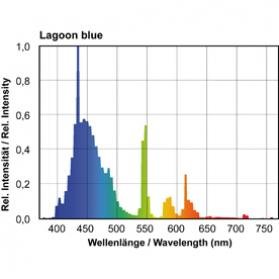What will happen is that they will brown out because there isn't enough PAR, but take that blue light down there at 30 feet or wherever, and increase it, and you'll grow any coral under it. This is what I am doing right now. Corals that grow in shallow waters don't need red and green, they just need more PAR than the deeper water ones. Put a ton of blue light over an acropora, and it will certainly grow and look great. As a matter of fact, it will look better than it would under the same amount of PAR coming from a lower K source.


